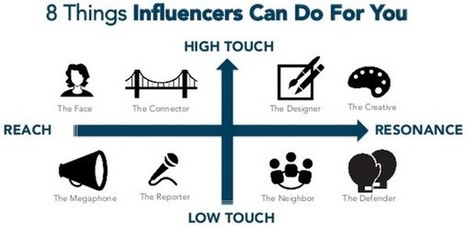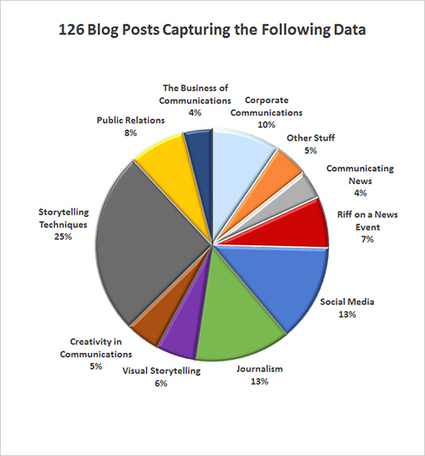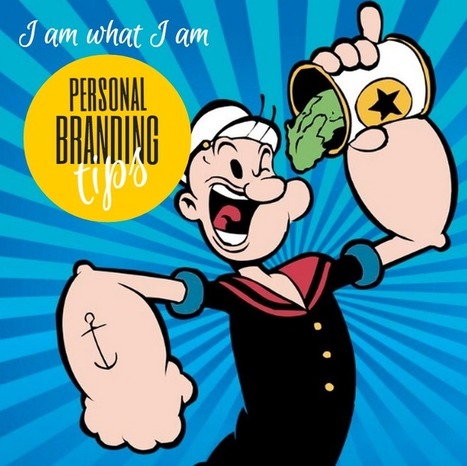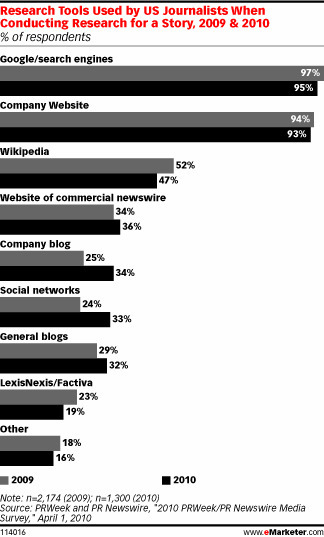 Your new post is loading...
 Your new post is loading...
As executive influence becomes more important, C-suite executives really do need to “be their brand.” To that end, being seen as an influential thought leader or opinion maker is vital for any CXO hoping to lead a competitive company in today’s world.
But how do you do that? We decided to look at people who are doing it successfully today, and reverse-engineer their secrets. We identified 7 important habits, the first 4 of which we’ll cover in today’s article. They are: - Own A Topic
- Make The Most of Controversy
- Corollary – Don’t Work in Finance
- Tweet Early, Tweet Often aka Publish or Perish
- Know Your Audience
- Be More Than A Brand Extension
- Make Yourself Accessible
So let’s see exactly who these influential leaders are....
Do you want to be a sought-after resource in your niche?
Do you need tips on how to become a Twitter influencer?
To be a leader on Twitter, it’s important to understand the dynamics of Twitter conversations and the role of influencers.
In this article I’ll show you the two most important types of Twitter influencers and how you can become one....
Want sway? Who doesn’t?
We all want to be influential.
So our conversations often become about influencer marketing—you know, the fine art of getting big kahunas in your camp. To achieve greater reach and resonance (ooh, fancy marketing words), you try to win over the people who already have it. And it can be amazingly effective.
I’ve found a fair share of articles and eBooks on influencer marketing, which cover the basics, but haven’t seen many practical and powerful “go get it done” lists. Consequently, I created one....
The 4 ways to find online influencers, and the 8 things you can ask influencers to do for your brand. Includes slides and free Webinar recording, from Jay Baer.
Social media thought leadership requires both direct and indirect tactics. Using your own social media channels is your direct reach. It is limited by the quality and size of your audiences on each of the social networks you use and how attentive your audiences are to your posts. You can improve attentiveness by being interesting, engaging and useful, but there are limits to what you can do with direct outreach here.
It is via indirect channels that you truly become a thought leader. When people share your posts with their networks, when they seek you out for answers to their questions and when they start talking about your ideas without even mentioning you, that is what thought leadership has become.
When the press retweet you; when experts and policymakers follow you and incorporate your ideas into their work; when these things happen to you, you are a thought leader....
What is thought leadership? It’s a question that I recently asked myself after reading about Michigan’s Lake Superior State University’s annual list of overused words and phrases that students deem worthy of banishment from the English language. Among the offenders in 2011 were some tried-and-true favorites (ginormous and man cave to name a couple), as well as relative newcomers to our daily vernacular like occupy (as in Zuccotti Park) and the new normal, a darling of Wall Street since the financial crisis.
All in all it’s not a bad list, but it seems to me that our friends at LSSU missed an obvious target. I’m talking about 17 letters that can be combined to form what has become a ubiquitous and, frankly, increasingly cliché term: thought leadership...
Is your thought leadership strategy using research wisely? It's not about proving your intelligence to customers, but rather about moving beyond "showing off" and actually providing something of value...
According to CMI, 57 percent of marketers feel publishing original research is an effective content tactic. But let’s be frank, much of what passes for “research” is just a small cut above a Survey Monkey experiment led by your summer intern (no offense to hard-working summer interns).
Tellabs happens to do original research well. Really well. And George Stenitzer, CMO of Tellabs, did not disappoint when we asked him to talk about Tellabs’ success using original, robust original research as part of its thought leadership strategy....
Two important but too-unsung women in media — performer Amanda Palmer and Google ad exec Susan Wojcicki — met at an idea this week: that media and advertising are becoming voluntary. They also touch on ideas I’ve been trying to write about: that media should be in the relationship business, not just the content business. In other words, media’s value isn’t necessarily intrinsic in content — as in, “you should pay for this product because the work to create it has value” — but can be realized in the relationships that form around content....
You can be the leading "media company" in your industry. Make the choice, and bolster your content marketing efforts with these 7 moves that will give you the advantage over your media competitors. ...Seven ways to take the media world by storm None of this is rocket science, but combined together, the following seven tips will create a powerful concoction that will be hard for any company, including media companies and your direct competitors, to compete with....
... “So WHAT IS thought leadership? It’s an inside baseball term. Can you define it?” Good question But it’s also one that we marketers also need to ask ourselves. Even among marketers there seems to be some confusion about what thought leadership is. I often hear people use thought leadership as a synonym for content marketing – another big buzzword du jour. But they are not one and the same thing. Not at all. Thought leadership, to summarize Forrester Research analyst Jeff Ernst, is the strategic process of coming up with and sharing big ideas, insights and new perspectives on the critical issues that buyers face....
Thought leadership is content on steroids. It stands out from the crowd because it is different; it offers something new and the good campaigns deliver information or insights that address a client’s challenges or issues. In some cases really brilliant thought leadership shifts paradigms of an entire industry. Thought leadership is no ordinary content but rather content that sets one brand apart from the competition and, in the process, leverages a phenomenal platform for trust and engagement. Good thought leadership content is sophisticated and intelligent and should be packaging and delivered appropriately to a defined audience. And herein lies the key....
...I agree that content curation is often misunderstood and, therefore, misused as a shortcut to thought leadership. And I have no quarrel with the point that you need to create your own content that articulates your vision in order to establish thought leadership.
However, I would say it differently.
Thought leadership is about demonstrating clarity of vision and in order to establish it you need to create content that expresses that vision. But you also need to show that you can recognize that vision in others. To my mind, thought leaders both articulate their own vision and identify it and tease it out of other people’s work. It’s not an either/or proposition....
|
Last Christmas, infamous file leaker Edward Snowden delivered a two minute broadcast across the UK with a harrowing message regarding the digital invasion of privacy. He warns:
"A child born today will grow up with no conception of privacy at all. They’ll never know what it means to have a private moment to themselves – an unrecorded, unanalyzed thought."
As a latter Millennial I’ve grown up with all of this technology around, and personally participated in the rise of social media; we we’re the first to adapt to this new format of expression. Long before the Googles and Facebooks of Silicon Valley found a way to proficiently profit off of their free services, we enjoyed unfettered interconnectivity. Sure, internet speeds were painfully slow and websites were clunky, but we didn’t care; we were riding the wave of the future.
Fast forward a decade – our temporal trend is now ubiquitous. It’s almost hard to recall a time when I didn’t have a smart phone, or Facebook, or Gmail. And nowadays these services are just so prim, so neat, so integrated with every facet of my life – not a day goes by where I’m not immersed in the cyber realm. The greater part of my life is experienced online....
...When it comes to organic search, Google and other search engines place a premium on backlinks. They interpret backlinks as “votes” for the content.Of course, to generate backlinks, you must create content that prompts other digital properties to share your content with their audiences.
For the type of content that grades out as shareable, it’s typically not product information or a personnel announcement or an industry award — information we characterize as company-centric. Instead, it’s the type of business storytelling that’s useful or informative and ultimately helps people in their jobs.In short, thought leadership plays at the industry level, not the company level, ideally offering takes that can’t be found elsewhere.
Such dot-connecting points to blogging as one of the best platforms for thought leadership....
The cost of influence marketing tools have gone up but here are some influence research tools to determine who is pulling their weight on the web
...I was embarassed for this Fortune 500 company that equates Twitter followers with influence. That is so 2011.
Today we need more than that, right? Problem is, for cheapskates like me it’s getting harder and harder to find free tools to use. As influence marketing has gotten hotter, the prices have gone up on great platforms like Traakr and Appinions which don’t even offer free trials any more.
So here are a few work-arounds for people trying to get a handle on influence marketing on the cheap....
Perhaps we don’t have that much in common. Ah, but we do. Personal brands are we. Our agendas may differ—better job, more clients, book sales, or (your goal here)—but we seek the same things: recognition, respect, influence and success.
You, my friend, are a brand.
A photographer. Life coach. Presentation expert. Alternative energy entrepreneur. Website developer. Skin care clinician. These are six simplified profiles of clients who have hired me recently to help them create more effective online marketing by developing their personal brand....
Why are newspaper opinion columnists so consistently baffled by the politics, technologies, and social mores of the 21st century? We've crunched some data, and we think we've figured out the answer: They're old as hell.
In or around June 1995 human character changed again. Or rather, it began to undergo a metamorphosis that is still not complete, but is profound – and troubling, not least because it is hardly noted....
...When I think about, say, 1995, or whenever the last moment was before most of us were on the internet and had mobile phones, it seems like a hundred years ago. Letters came once a day, predictably, in the hands of the postal carrier. News came in three flavours – radio, television, print – and at appointed hours. Some of us even had a newspaper delivered every morning.
Those mail and newspaper deliveries punctuated the day like church bells. You read the paper over breakfast. If there were developments you heard about them on the evening news or in the next day’s paper. You listened to the news when it was broadcast, since there was no other way to hear it. A great many people relied on the same sources of news, so when they discussed current events they did it under the overarching sky of the same general reality. Time passed in fairly large units, or at least not in milliseconds and constant updates. A few hours wasn’t such a long time to go between moments of contact with your work, your people or your trivia....
...On the Web, people trade attention for good, useful content. So you need to have a plan that will help you develop, publish, and catalog content to make you more effective in attracting search and keeping people coming back to your source. There are still companies that struggle with the idea of becoming content producers, and thus have not yet formulated a content strategy. It makes sense to have one because it helps you define why content is useful and usable, good for the bottom line and for instilling a sense of purpose -- for customers and business alike. Some organizations are affected by the sprawling issue when it comes to content. Separate groups that develop their own and don't necessarily map to the business' overall direction is one example. Others have the opposite problem -- too few resources means not enough content to start generating the search and participation volumes they need....
In his new book, PRESENT SHOCK: When Everything Happens Now (Current; March 15, 2013), Rushkoff introduces the phenomenon of presentism, or – since most of us are finding it hard to adapt – present shock. Alvin Toffler’s radical 1970 book, Future Shock, theorized that things were changing so fast we would soon lose the ability to cope. Rushkoff argues that the future is now and we’re contending with a fundamentally new challenge. Whereas Toffler said we were disoriented by a future that was careening toward us, Rushkoff argues that we no longer have a sense of a future, of goals, of direction at all. We have a completely new relationship to time; we live in an always-on “now,” where the priorities of this moment seem to be everything.... Rushkoff identifies the five main ways we’re struggling, as well as how the best of us are thriving in the now...
The humour in this Dilbert cartoon – the boss talking about blogging his thoughts about his business when in reality it will be his employee doing the thinking and the writing – is a simple but good reminder that expressing opinion online is a lot about authenticity. You may have someone suggesting topics to you that reflect and are linked to your business objectives – a key role of the communicator as strategic counsellor and adviser – but if something’s published as a blog post with your name on it, authentic is not what it is if the thoughts and the words are by someone else and that fact isn’t disclosed somewhere. Expressing authentic opinion online can also be a valuable use of your time whether you’re the boss or an employee. The time you invest in sharing what you think – a post you write or a comment you leave as you join someone else’s conversation - can provide a powerful and credible demonstration of your knowledge and opinion about a topic and your willingness and ability to engage with others in discussing it....
...Organizations such as Intel are beginning to look and operate more like media companies. They’re evaluating topics and trends in real-time and creating a brand narrative across multiple networks, a transition that doesn’t happen overnight. It takes a lot of content to fuel that many channels–and a dedicated team to manage the ideation, creation, and analysis of that content. More importantly, it takes a lot of quality content to generate engagement with audiences across continents and timezones, and for Intel engagement is a key metric. In fact, Intel conducted a study benchmarking the Facebook engagement rates of other brands similar to Intel in size and standing. They found–much to their delight–that Intel came out on top with higher levels of engagement than any of the other brands. Intel also discovered that organic engagement (vs. paid) had steadily increased over time, confirming the right content is hitting the right audience. But how does Intel come up with the “right” content, then find the “right” audience? What are they doing differently than those other brands?...
The first question that you need to ask yourself is: “Is a thought leadership website any different than any other type of website?” Well, perhaps not, but we know that the site you create should be tailored to meet your specific objectives. If you’re building a site to sell online vs. a site to share your unique point of view and content, you are, in effect, creating two very different types of websites. To that end, we’ve reviewed a series of websites billed as ‘thought leadership’ sites and have pulled a few of the best elements from each that we feel really aid each firm in furthering their thought leadership via the website....
|



 Your new post is loading...
Your new post is loading...

































As executive influence becomes more important, C-suite executives really do need to “be their brand.” To that end, being seen as an influential thought leader or opinion maker is vital for any CXO hoping to lead a competitive company in today’s world.
But how do you do that? We decided to look at people who are doing it successfully today, and reverse-engineer their secrets. We identified 7 important habits, the first 4 of which we’ll cover in today’s article. They are:
Own A TopicMake The Most of ControversyCorollary – Don’t Work in FinanceTweet Early, Tweet Often aka Publish or PerishKnow Your AudienceBe More Than A Brand ExtensionMake Yourself Accessible
So let’s see exactly who these influential leaders are....